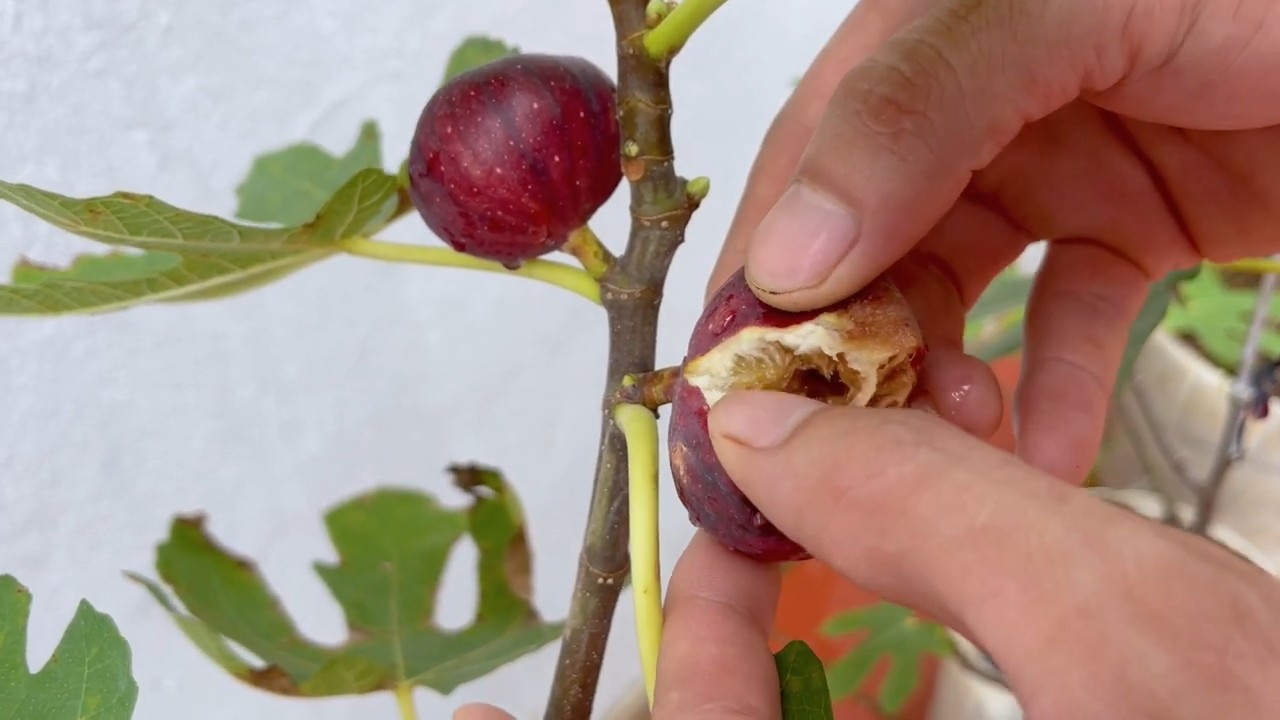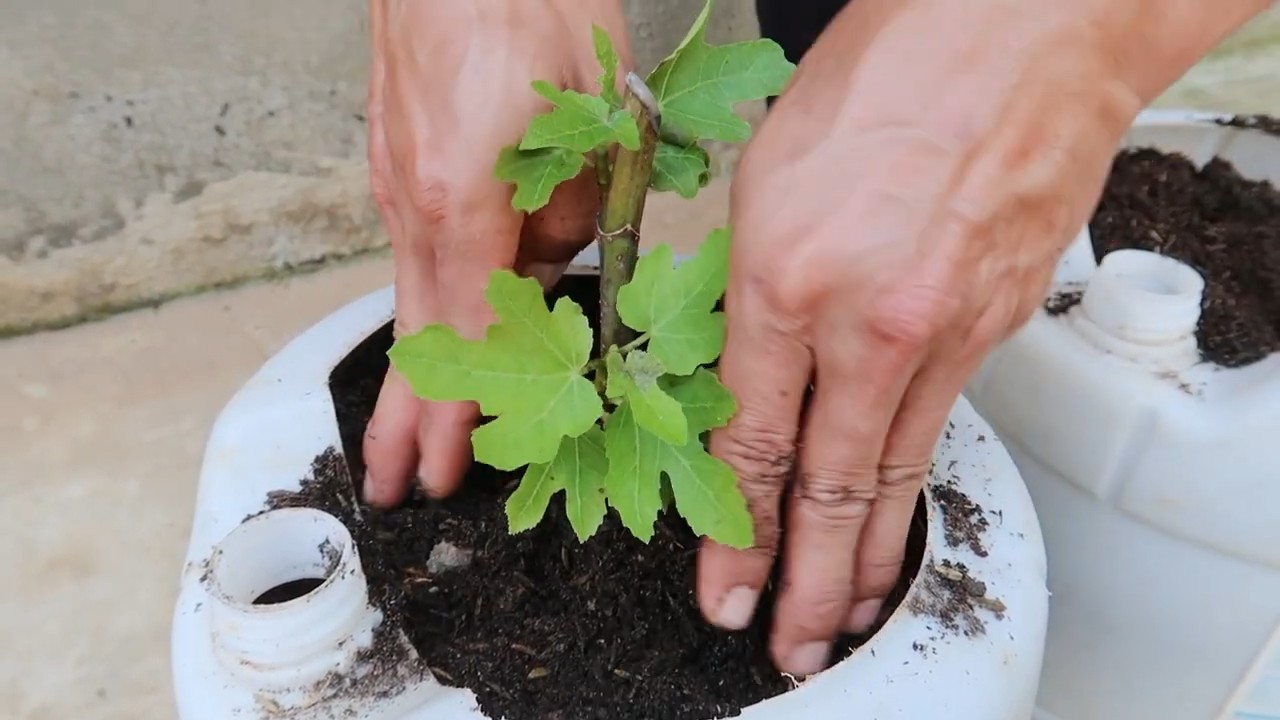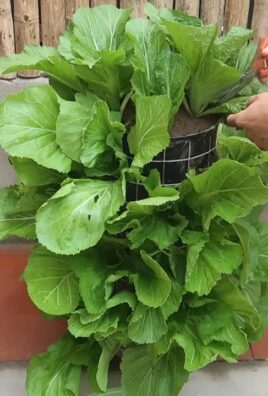Growing Figs in Containers might seem like a challenge, but trust me, it’s totally achievable, even if you don’t have a sprawling backyard! Have you ever dreamed of plucking a perfectly ripe, sun-warmed fig straight from your own tree? Imagine the sweet, jammy flavor bursting in your mouth – that’s the magic we’re about to unlock together.
Figs have a rich history, dating back to ancient civilizations. They were prized by the Romans and Egyptians, often associated with prosperity and abundance. Today, you don’t need to be a pharaoh to enjoy these delicious fruits. But why should you bother with growing figs in containers? Well, for starters, it gives you control! Container gardening allows you to move your fig tree to the sunniest spot, protect it from harsh weather, and even bring it indoors during the winter in colder climates. Plus, it’s a fantastic way to enjoy fresh, organic figs without the need for a large garden space.
This DIY guide is packed with simple, effective tricks and hacks to help you successfully cultivate your own thriving fig tree in a container. I’ll walk you through everything from choosing the right container and soil to pruning techniques and pest control. Get ready to enjoy a bountiful harvest of delicious figs, right from your patio or balcony! Let’s get started!

Feigen im Topf ziehen: Dein DIY-Leitfaden für eine reiche Ernte
Hey Feigenliebhaber! Hast du auch den Traum von saftigen, süßen Feigen direkt vom eigenen Baum, aber keinen Garten? Keine Sorge, ich zeige dir, wie du Feigen erfolgreich in Töpfen ziehen kannst! Es ist einfacher als du denkst und mit ein bisschen Liebe und Geduld wirst du bald deine eigenen Feigen ernten.
Warum Feigen im Topf ziehen?
* Platzsparend: Ideal für Balkone, Terrassen oder kleine Gärten.
* Kontrollierte Bedingungen: Du kannst die Bodenqualität, Bewässerung und Sonneneinstrahlung besser steuern.
* Winterschutz: Im Topf lassen sich Feigenbäume leichter vor Frost schützen.
* Dekorativ: Ein Feigenbaum im Topf ist ein echter Hingucker!
Was du brauchst: Die Materialliste
* Feigenbaum-Setzling: Wähle eine Sorte, die für den Anbau im Topf geeignet ist (z.B. ‘Brown Turkey’, ‘Little Miss Figgy’, ‘Celeste’). Achte auf gesunde Blätter und Wurzeln.
* Großer Topf: Mindestens 40-50 cm Durchmesser, mit Drainagelöchern.
* Hochwertige Blumenerde: Eine Mischung aus Gartenerde, Kompost und Sand ist ideal.
* Drainagematerial: Blähton, Kies oder Tonscherben.
* Dünger: Langzeitdünger oder Flüssigdünger für Obstbäume.
* Gießkanne oder Schlauch: Für die Bewässerung.
* Gartenschere: Für den Rückschnitt.
* Mulchmaterial: Rindenmulch oder Stroh (optional).
* Handschuhe: Zum Schutz deiner Hände.
Schritt-für-Schritt-Anleitung: So pflanzt du deinen Feigenbaum
1. Den richtigen Zeitpunkt wählen: Der beste Zeitpunkt zum Pflanzen ist im Frühjahr oder Herbst. So hat der Baum genügend Zeit, sich vor extremen Temperaturen zu etablieren.
2. Den Topf vorbereiten:
* Lege eine Schicht Drainagematerial (Blähton, Kies oder Tonscherben) auf den Boden des Topfes. Das sorgt für eine gute Drainage und verhindert Staunässe.
* Fülle den Topf mit einer Schicht Blumenerde.
3. Den Feigenbaum einpflanzen:
* Nimm den Feigenbaum vorsichtig aus dem Anzuchttopf.
* Lockere die Wurzeln etwas auf, falls sie stark verwurzelt sind.
* Setze den Baum mittig in den Topf. Die Oberseite des Wurzelballens sollte etwa 2-3 cm unter dem Topfrand liegen.
* Fülle den Topf mit Blumenerde auf und drücke sie leicht an.
* Gieße den Baum gründlich an.
4. Mulchen (optional):
* Bedecke die Oberfläche der Erde mit einer Schicht Rindenmulch oder Stroh. Das hilft, die Feuchtigkeit im Boden zu halten und Unkraut zu unterdrücken.
Die richtige Pflege: So gedeiht dein Feigenbaum
1. Standort: Feigenbäume lieben die Sonne! Stelle deinen Topf an einen sonnigen Standort mit mindestens 6-8 Stunden direkter Sonneneinstrahlung pro Tag. Ein Südbalkon oder eine Terrasse ist ideal.
2. Bewässerung:
* Gieße deinen Feigenbaum regelmäßig, besonders während der Wachstumsperiode (Frühling und Sommer).
* Die Erde sollte immer leicht feucht sein, aber nicht nass. Vermeide Staunässe!
* Überprüfe die Feuchtigkeit der Erde, indem du deinen Finger etwa 2-3 cm tief in die Erde steckst. Wenn sie sich trocken anfühlt, ist es Zeit zu gießen.
* Reduziere die Bewässerung im Herbst und Winter, wenn der Baum in die Ruhephase geht.
3. Düngung:
* Dünge deinen Feigenbaum während der Wachstumsperiode (Frühling und Sommer) alle 2-4 Wochen mit einem Flüssigdünger für Obstbäume oder verwende einen Langzeitdünger.
* Befolge die Anweisungen auf der Düngemittelpackung.
* Stelle die Düngung im Herbst und Winter ein.
4. Rückschnitt:
* Ein regelmäßiger Rückschnitt fördert das Wachstum und die Fruchtbildung.
* Schneide im späten Winter oder frühen Frühjahr (vor dem Austrieb) abgestorbene, kranke oder sich kreuzende Äste ab.
* Kürze lange Triebe ein, um die Form des Baumes zu erhalten und die Fruchtbildung anzuregen.
* Entferne Wasserschosse (Triebe, die direkt aus dem Boden wachsen).
5. Überwinterung:
* Feigenbäume sind nicht winterhart und müssen vor Frost geschützt werden.
* Stelle den Topf an einen kühlen, hellen Ort, z.B. in eine Garage, einen Keller oder ein Gewächshaus. Die Temperatur sollte zwischen 0 und 10 Grad Celsius liegen.
* Gieße den Baum während der Überwinterung nur sparsam, um ein Austrocknen zu verhindern.
* Sobald die Frostgefahr vorüber ist (im Frühjahr), kannst du den Baum wieder ins Freie stellen. Gewöhne ihn langsam an die Sonne, um Verbrennungen zu vermeiden.
Häufige Probleme und Lösungen
* Blattfall: Kann durch zu viel oder zu wenig Wasser, Nährstoffmangel oder Temperaturschwankungen verursacht werden. Überprüfe deine Pflege und passe sie entsprechend an.
* Schädlinge: Feigenbäume können von Blattläusen, Spinnmilben oder Schildläusen befallen werden. Bekämpfe die Schädlinge mit natürlichen Mitteln oder Insektiziden.
* Keine Früchte: Kann durch mangelnde Sonneneinstrahlung, unzureichende Düngung oder einen falschen Rückschnitt verursacht werden. Stelle sicher, dass dein Baum genügend Sonne bekommt, regelmäßig gedüngt wird und richtig geschnitten wird.
* Früchte fallen ab, bevor sie reif sind: Dies kann durch Stress verursacht werden, wie z.B. plötzliche Temperaturschwankungen, Wassermangel oder Nährstoffmangel. Versuche, die Bedingungen für deinen Baum so stabil wie möglich zu halten.
Sortenempfehlungen für den Topfanbau
Nicht alle Feigensorten eignen sich gleich gut für den Anbau im Topf. Hier sind ein paar Empfehlungen:
* ‘Brown Turkey’: Eine robuste und ertragreiche Sorte, die gut im Topf wächst.
* ‘Little Miss Figgy’: Eine Zwergfeigensorte, die ideal für kleine Töpfe und Balkone ist.
* ‘Celeste’: Eine süße und aromatische Sorte, die früh reift.
* ‘Chicago Hardy’: Eine sehr winterharte Sorte, die auch in kälteren Regionen im Topf angebaut werden kann.
Erntezeit: Der Lohn deiner Mühe
Die Erntezeit für Feigen ist in der Regel im Spätsommer oder Herbst. Die Früchte sind reif, wenn sie weich sind und leicht vom Baum fallen. Genieße deine selbstgezogenen Feigen frisch vom Baum oder verwende sie für Marmelade, Kuchen oder andere Leckereien!
Zusätzliche Tipps für eine erfolgreiche Feigenernte
* Drehe den Topf regelmäßig: So bekommen alle Seiten des Baumes genügend Sonne.
* Kontrolliere den Baum regelmäßig auf Schädlinge und Krankheiten: Je früher du ein Problem erkennst, desto einfacher ist es, es zu beheben.
* Sei geduldig: Es kann ein paar Jahre dauern, bis dein Feigenbaum im Topf Früchte trägt. Aber es lohnt sich!
Ich hoffe, dieser Leitfaden hilft dir dabei, deinen eigenen Feigenbaum im Topf zu ziehen und eine reiche Ernte zu erzielen. Viel Erfolg und lass es dir schmecken!

Conclusion
So, there you have it! Growing figs in containers isn’t just a possibility; it’s a rewarding and accessible way to enjoy fresh, delicious figs, even if you don’t have a sprawling orchard. We’ve walked through the key steps, from selecting the right container and variety to providing the essential care that will help your fig tree thrive.
Why is this DIY trick a must-try? Because it unlocks the potential to cultivate your own fig bounty, regardless of your space limitations. Imagine stepping outside your door and plucking a sun-ripened fig, bursting with flavor, knowing you nurtured it from a sapling. That’s the magic of container gardening, and figs are particularly well-suited to this method. Container growing also offers unparalleled control over the growing environment. You can easily move your fig tree to chase the sun, protect it from harsh weather, and ensure it receives the precise amount of water and nutrients it needs. This level of control often translates to healthier, more productive trees.
But the benefits extend beyond convenience and control. Growing your own figs is also a sustainable and eco-friendly choice. You’ll reduce your reliance on commercially grown figs, which often travel long distances, and you’ll have the satisfaction of knowing exactly where your food comes from and how it was grown. Plus, the process of nurturing a fig tree is incredibly therapeutic. It’s a chance to connect with nature, learn about plant life, and enjoy the simple pleasures of gardening.
Don’t be afraid to experiment with different fig varieties to find your favorites. Consider trying ‘Brown Turkey’ for its reliability and adaptability, ‘Black Mission’ for its rich, dark fruit, or ‘Celeste’ for its cold hardiness. You can also explore different container materials, such as terracotta, plastic, or even repurposed items like whiskey barrels. Just remember to ensure adequate drainage.
And speaking of variations, consider these ideas to personalize your container fig growing experience:
* Espalier Training: Train your fig tree against a wall or trellis for a beautiful and space-saving display.
* Companion Planting: Plant herbs like rosemary or thyme around the base of your fig tree to deter pests and attract beneficial insects.
* Grafting: If you’re feeling adventurous, try grafting different fig varieties onto a single rootstock for a multi-flavored fig tree.
The most important thing is to get started! Don’t let fear of failure hold you back. Gardening is a learning process, and even experienced gardeners encounter challenges. Embrace the journey, learn from your mistakes, and celebrate your successes.
We’re confident that you’ll find growing figs in containers to be a rewarding and enjoyable experience. So, grab a container, choose your favorite fig variety, and get ready to embark on a delicious adventure. We encourage you to try this DIY trick and share your experiences with us! Post photos of your fig trees, share your tips and tricks, and let us know what you’ve learned. Together, we can create a community of fig-loving gardeners who are passionate about growing their own food. Happy growing!
Frequently Asked Questions (FAQs)
What is the best fig variety to grow in a container?
The best fig variety for container growing depends on your climate and personal preferences. However, some popular and reliable choices include ‘Brown Turkey,’ ‘Black Mission,’ ‘Celeste,’ and ‘Little Miss Figgy.’ ‘Brown Turkey’ is known for its adaptability and productivity, making it a great choice for beginners. ‘Black Mission’ produces rich, dark fruit with a distinctive flavor. ‘Celeste’ is a cold-hardy variety that can tolerate colder temperatures. ‘Little Miss Figgy’ is a dwarf variety that’s perfect for smaller containers and patios. Consider your local climate and the size of your container when making your selection. Researching the specific needs of each variety will help you make the best choice for your situation.
How often should I water my container fig tree?
Watering frequency depends on several factors, including the size of the container, the weather, and the type of soil. In general, you should water your fig tree when the top inch or two of soil feels dry to the touch. During hot, dry weather, you may need to water daily. During cooler, wetter weather, you may only need to water once or twice a week. Avoid overwatering, as this can lead to root rot. Ensure your container has adequate drainage to prevent water from pooling at the bottom. A good rule of thumb is to water deeply until water drains out of the drainage holes.
What kind of soil should I use for my container fig tree?
Use a well-draining potting mix that’s specifically formulated for containers. Avoid using garden soil, as it can become compacted and poorly drained in a container. A good potting mix will contain a blend of ingredients like peat moss, perlite, vermiculite, and compost. These ingredients help to retain moisture while also providing good drainage and aeration. You can also amend your potting mix with slow-release fertilizer to provide your fig tree with essential nutrients.
How much sunlight does my container fig tree need?
Fig trees need at least 6-8 hours of direct sunlight per day to thrive. Place your container fig tree in a sunny location where it will receive plenty of sunlight. If you live in a particularly hot climate, you may need to provide some afternoon shade to protect the leaves from scorching. If you’re growing your fig tree indoors, supplement with grow lights if necessary to ensure it receives adequate light.
Do I need to fertilize my container fig tree?
Yes, fig trees benefit from regular fertilization, especially when grown in containers. Use a balanced fertilizer that’s specifically formulated for fruit trees. Follow the instructions on the fertilizer label for application rates and frequency. Fertilize your fig tree during the growing season (spring and summer) and reduce or stop fertilizing during the dormant season (fall and winter). You can also amend your soil with compost or other organic matter to provide your fig tree with essential nutrients.
How do I prune my container fig tree?
Pruning is important for maintaining the shape and size of your container fig tree, as well as for promoting fruit production. Prune your fig tree during the dormant season (late winter or early spring) before new growth begins. Remove any dead, damaged, or crossing branches. You can also prune to shape the tree and encourage branching. Fig trees produce fruit on new growth, so avoid pruning too heavily, as this can reduce fruit production.
How do I protect my container fig tree from frost?
Fig trees are sensitive to frost, so it’s important to protect them during cold weather. If you live in an area with mild winters, you may be able to leave your container fig tree outdoors. However, if temperatures are expected to drop below freezing, you’ll need to take precautions. You can wrap the container with burlap or blankets to insulate the roots. You can also move the container to a sheltered location, such as a garage or shed. If you live in an area with harsh winters, you may need to bring your container fig tree indoors.
How do I overwinter my container fig tree indoors?
If you live in an area with cold winters, you’ll need to overwinter your container fig tree indoors. Before bringing it indoors, prune the tree and remove any dead or diseased leaves. Place the tree in a cool, dark location, such as a garage or basement. Water sparingly, only when the soil is dry to the touch. The tree will go dormant during the winter and will not need much light or water. In the spring, gradually acclimate the tree to outdoor conditions before placing it back in its sunny location.
My fig tree is not producing fruit. What could be the problem?
There are several reasons why your fig tree may not be producing fruit. It could be due to insufficient sunlight, improper watering, lack of fertilization, or improper pruning. Make sure your fig tree is receiving at least 6-8 hours of direct sunlight per day. Water regularly, but avoid overwatering. Fertilize during the growing season with a balanced fertilizer. Prune your fig tree during the dormant season, but avoid pruning too heavily. It’s also possible that your fig tree is not old enough to produce fruit. Some fig varieties take several years to begin fruiting. Finally, some fig varieties require pollination to produce fruit. If you’re growing a variety that requires pollination, you may need to hand-pollinate the flowers.
How do I deal with pests and diseases on my container fig tree?
Inspect your fig tree regularly for pests and diseases. Common pests include aphids, spider mites, and scale. Common diseases include fig rust and leaf spot. If you find pests or diseases, treat them promptly with appropriate insecticides or fungicides. You can also use organic pest control methods, such as insecticidal soap or neem oil. Good air circulation and proper watering can also help to prevent pests and diseases.





Leave a Comment